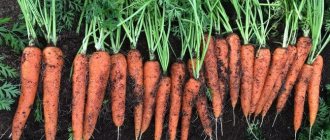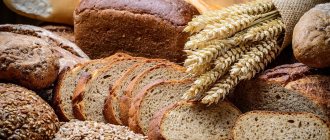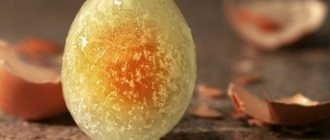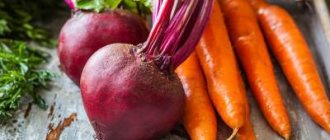It is not enough to simply harvest a large harvest of carrots; it is much more difficult to create optimal conditions for its long-term storage.
There are many reasons that lead to spoilage of vegetable crops: high air temperature, increased dampness, infection with pathogenic microorganisms.
However, the main factor that determines the shelf life of vegetables is their belonging to a certain species.
Read the article about which varieties of carrots are best suited for long-term winter storage.
Description of carrot varieties
There are more than 40 types of carrots, but not all of them can boast of good yield, sweet taste, juicy pulp and long shelf life. We present several varieties of such vegetables that have most of these properties.
This is what the TOP 10 best carrot varieties look like:
- Vitamin 6 - was developed in 1969 on the basis of Nantes and Amsterdam. Peat and mineral soils are suitable for it. It is frost-resistant and suitable for sowing for the winter.
- Losinoostrovskaya 13 is a vegetable crop included in the State Register of Plants of Russia in 1964. The name was given to it by breeders from the Federal Scientific Center for Vegetable Growing. Seeds are sown in areas open to sunlight; preliminary plowing of the soil is encouraged.
- Canada is a hybrid added to the State Register for the Central Region of the Russian Federation. It is intended for cultivation in places with unfavorable climate. The yield of marketable products is about 93%. The maximum yield was established in the Vladimir region - 709 c/ha.
- Samson is a Dutch variety that appeared in 2015. It belongs to the Nantes type and forms voluminous tops of a bright green color. In Russia, this carrot has been cultivated since the early 2000s. It is often grown for sale due to its marketable appearance.
- Moscow winter - one of the sweetest, suitable for long-term storage in the cellar, retains its taste and presentation well. Seeds do not require special soil preparation. The shoots are strong and healthy. The sugar content here is around 12%.
- Shantane is a mid-season type that grows easily on almost all soils - loamy, chernozem, etc. It is characterized by heat resistance and a long shelf life - over 5 months. In terms of yield, this is not the most profitable option, but it can be increased by cultivating vegetables on ridges.
- Queen of Autumn is a late type that is often grown in temperate continental and subtropical climates. It belongs to the “Carotene” type due to the high concentration of the corresponding substance in the composition. Because of this, this carrot variety is considered the best for people with eye diseases.
- Nantes 4 - grown in Asian and European countries, including most of Russia. It was developed by Soviet scientists around the 30s of the 20th century. It is often taken as a basis for breeding other types. The fruits tolerate transportation well and are not susceptible to rot.
- Emperor is a leader in carotene and sugar content, so it should be used with caution by people with diabetes. It is allowed to sow seeds before winter. It is widely used in baby food and in the factory production of juice, purees, and canning.
The best soil for plants
Comparison table of all types
| Variety name | Maturation period | Weight | Length | Productivity |
| Queen of Autumn | Late | 230 | 25-27 | 9 kg |
| Dolyanka | Late | 130-150 | 17 | 6 |
| Flaccoro | Late | 190-210 | 25-30 | 8 |
| Nantes-4 | Average | 130-150 | 20 | 6 |
| Samson | Average | 170 | 22 | 7 |
| Chance | Average | 130 | 18 | 5 |
| Touchon | Early | 100 | 15 | 5 |
| Artek | Early | 140-150 | 13-15 | 6 |
| Fun F1 | Early | 50 | 12 | 5 |
| Karotan | Average | 180 | 25 | 8 |
| Darling | Early | 140-160 | 15 | 7 |
How we chose
The TOP is based on “non-capricious” varieties that are resistant to short frosts and droughts. The selection among the nominees was carried out taking into account many criteria:
- Color saturation;
- Dimensions and weight;
- Beta-carotene content;
- Nuances of sowing;
- Recommended soil type;
- Features of care;
- Ripening time;
- Juiciness of the pulp;
- Taste - how sweet it is;
- Acceptable methods of culinary processing;
- Ease of harvesting;
- Duration of storage in the cellar.
An equally important requirement for the nominees was good yield - from 3-5 kg per 1 sq. m.
The best varieties of strawberries
The best carrot varieties for Siberia
To grow this vegetable in Siberia, carrots must withstand short-term frosts and be tolerant of small amounts of solar energy. Two species, selected as a result of an analysis of more than 10 nominees, have these characteristics.
Vitamin 6
This is a mid-season variety with a growing season of 70-100 days. The root vegetable has an oblong shape, a length of about 17 cm and a weight of 150-200 g. The vegetable has a small core and is not very hard. It has a sweet, almost honey-like taste, so it is great for making pies, fresh salads with apples and other fruits.
Vitamin 6 seeds are resistant to cold, so they can be sown in open ground in early spring. The harvest is harvested in the last days of August or in the first ten days of September. Root vegetables are stored well in winter, but they are susceptible to increased moisture. This carrot is one of the richest in carotene, which is very beneficial for vision.
Advantages
- Good yield;
- Juicy;
- Not very hard;
- Strong fruits;
- Withstands long droughts.
Flaws
- Not very high resistance to various diseases.
Vitamin 6 is well suited for open ground and is easy to care for - it does not require frequent fertilizing or weeding, and grows quietly on non-chernozem soils.
Losinoostrovskaya 13
The Losinoostrovskaya 13 variety was bred in the early 60s of the 20th century. for cultivation in the North Caucasus, Volga region, Western Siberian and Central Black Earth regions of the country. Sowing seeds can be done in mid-spring. It belongs to the mid-season, from the moment the tops appear until the root crops are harvested, it takes from 85 to 115 days. The harvest is rich - per 1 sq. m accounts for from 5.5 to 7.6 kg.
This carrot is resistant to various diseases: white and black rot, bacteriosis, etc. It tolerates cold weather well, the seedlings can withstand short-term frosts down to -3 degrees. It can be planted before winter, in which case the harvest will be in early spring.
Advantages
- Easy to clean;
- Does not lose its commercial qualities during storage;
- Ease of harvesting;
- Excellent keeping quality;
- Tasty both fresh and processed.
Flaws
- The required embedment depth is more than 2 cm;
- It is necessary to loosen the soil regularly.
Losinoostrovskaya 13 is considered not picky and behaves well on various types of soil: chernozem, clay, sand.
Preparing the site for winter sowing
The bed is prepared in advance before the soil freezes.
We loosen, cut grooves 3 cm deep for sowing, compact their bottom and leave it like that until frost.
To fill the furrows, we prepare dry soil in bags, and separately - compost, humus or a mixture of it with peat (4-5 buckets per sq. m). It is better to store bags in a frost-free room, but you can also store them outside under a canopy. The main thing is that the soil must be dry so that it does not freeze into clods.
Sowing carrot seeds before winter
We are waiting for the soil to freeze 5-8 cm. If snow falls by then, it’s not a problem. We remove snow from the bed (the remains can be swept away with a broom), sow and fill the furrows with prepared soil, and then mulch the bed with humus, compost or peat (the mulch layer should be 3-4 cm).
The best varieties of carrots for the Urals
The soil and weather conditions in the Urals are not the most favorable for planting vegetables in open ground. However, carrots are an exception, because there are special varieties bred for growing in not very fertile soil and in regions with short, not hot summers. We present the TOP 2 best seeds for such purposes.
Canada
The medium-late ripening variety “Canada” was created for cultivation in unfavorable climatic conditions. It is suitable for sowing in loamy, medium-heavy soil. The vegetable becomes ripe 120-130 days from the beginning of planting. Root crops grow large, long (about 20 cm), weighing from 150 to 200 g with a bright orange color.
A ripe vegetable has a smooth surface, is easily peeled and retains its presentation throughout the winter (if stored in the basement or refrigerator). The fruits are moderately sweet and juicy, suitable for consumption both raw and thermally processed.
Advantages
- Excellent keeping quality;
- Long-term storage;
- Disease resistance;
- Grows well in short droughts;
- Easy to prepare.
Flaws
- Thick peel.
Reviews note that this variety of carrots for open ground produces a good harvest and is excellent for growing for sale due to the preservation of taste and presentation for a long time.
Boltex
The “Boltex” variety is medium-late in ripening and is intended for sowing in open ground in mid-April – early May. However, it is also suitable for pre-winter planting, thanks to which you can get tasty fruits 2-3 weeks earlier. The vegetable ripens approximately 120 days after emergence. When ripe, the root vegetable reaches a length of approximately 15 cm, has a smooth and thin skin, a bright rich orange color and a slightly bitter taste.
Boltex is a fairly large carrot that can weigh up to 350 g. It is resistant to cracking and blooming, but requires the prevention of various diseases. Root vegetables have a strong specific odor and retain their commercial qualities and taste properties for a long time. The seeds have good germination and do not require special preparation for sowing.
Advantages
- High concentration of beta-carotene;
- Juicy pulp;
- Cleans without problems;
- Does not deteriorate during long-term storage;
- Suitable for cooking in any form.
Flaws
- During frosts, seedlings may deteriorate.
According to reviews, Boltex produces equally good harvests in greenhouses, in open ground, and under film.
Flaccoro
Flaccoro is a late variety of carrot, perfect for storage during the winter months. Ripens in 120-130 days. The length of the root crop is 20-24 cm, weight – 130-200 grams. A conical carrot with a sharp tip. The surface is smooth, orange in color. The taste of the variety is excellent. The core is round and juicy. The variety is characterized by high yield, excellent appearance and good storage until spring.
Interesting fact: according to the European Union directive, carrots are considered both a vegetable and a fruit.
4 0
The best varieties of carrots for central Russia
In central Russia, the climate is predominantly temperate continental, which means carrots can be safely grown in open ground. However, for this you need to choose varieties that are not picky about the quality of the soil, because the soil here is significantly inferior to that of Kuban and Moscow. We present just such names of seeds.
Samson
“Samson” carrots are one of the leaders in sales on the Russian market, which is facilitated by good taste and excellent keeping quality of ripe fruits. It was bred in Holland and has an average ripening period of 110 to 120 days. The root crop is large in size, even, smooth. The pulp is sweet and not very hard, so it is suitable for older people.
This is a fairly large vegetable, the length of which can reach 30 cm, and the weight - 150 g. Its pulp is juicy, without bitterness, and not too watery. Vegetables have a high carotene content – 10.6% (dry matter). Its yield is quite good - 5-8 kg of vegetables per 1 sq. m. m landing. These carrots are consumed fresh and used for processing.
Advantages
- Small core;
- Germination rate – no less than 80%;
- Can be sown at great distances from each other;
- Stores well until the next harvest;
- After heat treatment, it retains its bright taste.
Flaws
- The color is not very saturated.
Since the germination rate of carrot seeds of this variety is one of the best, the optimal sowing pattern is 3x15 cm. Thanks to this, it will not need to be thinned out as actively as other types.
Moscow winter
The “Moscow Winter” carrot stands out in the ranking primarily because of its elongated shape, so it is not always convenient to grate it. It has one of the shortest ripening periods - from 2 to 3 months. The root crop grows evenly and does not crack, but it is important to monitor soil moisture. Its flesh is reddish-orange, not hard and sweet, but not honey-like.
Moscow winter produces fruits weighing about 170 g, with a star-shaped or faceted core. It is not capricious in terms of care, but the yield directly depends on the weather, on average, from 1 sq. m manages to collect 5-7 kg of vegetables. These carrots are suitable for long-term storage in winter and are suitable for all processing methods, and also taste good when fresh.
Advantages
- It lies in the basement for a long time;
- Excellent taste;
- Well suited for sale, as it has a marketable appearance;
- Resistance to most diseases;
- Seeds can be sown before winter.
Flaws
- Does not tolerate prolonged frosts well;
- Doesn't like drought.
Reviews write that this carrot has a small seed sowing rate (3-4 kg per 1 ha), does not bolt or crack.
Basic tips and steps for growing
Carrots are planted in early spring, when the snow has melted and the soil has warmed up and dried out a little. Before planting in the ground, the seeds are prepared. They are placed in gauze and buried in the ground, then taken out and planted in rows. For good growth and development of the crop, several planting rules must be followed:
- the distance between rows should be about half a meter;
- The width of the beds is 1.5 meters; 3 rows are placed on such a bed;
- seeds are placed at a distance of 2 cm from each other;
- the depth of the furrows is 2 cm;
- after the emergence of seedlings, thinning is carried out so that each plant is at a distance of 4-6 cm from the next.
Planting scheme
The planting pattern is carried out in three ways: flat, stitched, high.
Flat
Rows are formed on a flat bed into which the seeds are evenly distributed. If you water too much, moisture may be retained. After germination, it is necessary to thin out the rows of plants.
Line
The seeds are distributed along the ridge of the bed. This creates good conditions for weeding. But when watering and fertilizing, the liquids drain, and the plant does not receive enough moisture and fertilizer.
High
Sowing is done on raised beds. They make deep rows in them, place seeds, and bury them. This method allows you to monitor the quality of crop watering.
Preparing the seat
For the seating area, choose a well-lit area. If the soil is fertile, then nothing is added, if on the contrary, then 15-20 grams of nitrogen fertilizers are added per 1 square meter of the sowing area. The soil should be loose and dry. Root vegetables do not like drafts; this must be taken into account when choosing a location.
Carrots cannot be planted every year in the same place, or after the following crops:
- dill;
- parsley;
- celery;
- parsnip.
Root crops develop well on the ground after cultivation:
- tomatoes;
- Luke;
- garlic;
- potatoes;
- white cabbage;
- cucumbers
Care
To get large fruits, you need to monitor the watering regime, fertilize, weed, and loosen.
Watering
Watering is carried out every two days. With a lack of moisture, root vegetables become bitter and develop more slowly. Water throughout the growing season until harvest. Water is added so that it wets the soil to a depth of 25-30 centimeters.
Weeding and loosening
Weeding must be carried out constantly. The presence of weeds nearby has a bad effect on the development of carrots; the fruits will not be able to gain size, since some of the nutrients from the soil are consumed by the weeds. The first weeding is carried out even before the start of germination, if necessary.
Carrots love loose soil. If crusts form on the surface of the soil, the fruits will grow distorted and irregular in shape. Loosening is carried out regularly, after rains and watering, when the soil dries out a little.
Top dressing
Feeding is carried out twice a season. The first is done 30 days after the first leaves appear above the ground, the second after another 30 days. Fertilizers are applied in dissolved form during watering. To do this, add 15 grams of nitrophos, 400 grams of ash, 20 grams of saltpeter, 15 grams of urea and 15 grams of superphosphate to 10 liters of water.
See also
Why do carrots curl and what to do and how to treat them?
Read
The best varieties of carrots for winter storage
Initially, carrots are considered a long-lasting vegetable, but even they can begin to rot, lose their taste and presentation under unfavorable conditions: increased moisture levels, low temperatures, various pests. Therefore, those who grow this vegetable for sale and for use in winter can offer the 2 best types of seeds.
Shantanay
Gardeners choose “Chantane” carrots because they are not picky about different types of soil - sand, clay, chernozem. This variety bears fruit well and shows consistently high yields over several years - about 60 tons per 1 hectare of land. It has some of the largest fruits, the average length of which can reach 15-17 cm, and weight – 250-270 g.
The fruits are cone-shaped, the surface is smooth, the peel is thin, the color is deep orange. It responds well to drought, but still requires regular watering. Low soil moisture levels increase the risk of vegetable cracking. They can be freely stored from autumn to spring without deterioration in quality. Shantane is versatile in terms of cooking - it can be fried, stewed, boiled, baked in the oven.
Advantages
- Moderately sweet taste;
- Strong smell;
- Tolerates freezing in the refrigerator;
- Soft enough for fresh consumption;
- No bitterness;
- Suitable for making Korean salad.
Flaws
- Not resistant to all diseases.
Regardless of the conditions in which carrots of this variety are grown, they are distinguished by better storage than similar options, high yield and excellent quality.
Queen of Autumn
The “Queen of Autumn” variety is one of the best for growing in a temperate continental climate, that is, on more than 40% of the territory of the Russian Federation. It ripens late, so harvest occurs in early October. From the time the seeds are sown until the vegetables are harvested, it takes about 120 days. This type gives a good harvest - about 8 kg per 1 sq. m, but on less fertile soils the results worsen.
“Queen of Autumn” produces root crops of a regular, elongated shape with a slightly flattened top. They reach a length of 30 cm and grow in weight up to 150-200 g. This vegetable is resistant to cold weather and cracking, but does not tolerate prolonged heat and dry soil. For a good harvest, periodic watering and fertilizing are required.
Advantages
- Great for preparing fresh salads;
- Gives first courses a beautiful orange tint;
- Due to its juiciness, it can be processed into juice;
- It can be stored in the basement for 8 months;
- High carotene content.
Flaws
- Not easily extracted from dense, dry soils.
Reviews say that even after prolonged heat treatment, individual fruits can remain moderately hard.
Nantes 4
Among the best varieties of carrots for winter storage, you definitely need o. This is in a sense a classic and the most popular carrot variety in our country. Its excellent yield and excellent taste have long become a model for other early and mid-season varieties. The taste of this carrot is excellent and is not inferior to late-ripening varieties. Excellent for baby and dietary nutrition due to the large amount of vitamins. Stored until mid-winter. The only drawback of this variety is that beautiful, even root crops are formed only on light soils.
Interesting fact: at first, carrots were not grown for food, but for their seeds and leaves. The seeds were used for medicinal purposes, and the leaves were valued for their pleasant aroma.
The best sweet varieties of carrots
The taste of carrots is affected by the conditions in which they are grown. For example, with excess moisture, it grows less sweet and juicy. However, we have selected several varieties that guarantee an almost honey harvest. In total, the descriptions of 10 items were analyzed, but only two of them were included in this TOP category.
Nantes 4
“Nantes” carrots are a standard of quality; they do not rot during long-term storage and retain their presentation for six months or more. The harvest is juicy and rich - about 230-260 c/ha, which makes it profitable to grow vegetables on an industrial scale. It is bought for its high carotene content, which is good for vision and explains the bright orange color of the pulp.
Nantes is the leader in the content of phytoncides that kill pathogens. It stores well from autumn to spring, but is susceptible to high humidity. A large amount of sugar inside allows you to get delicious juice. The fruits are light in weight - from 70 to 160 g and have a length of 12-16 cm. Their ripening period is 80-120 days. The better the care for the seedlings of this carrot variety, the faster the harvest appears.
Advantages
- Does not lose its sweet taste with increased soil moisture;
- Rapid emergence of seedlings;
- Easy harvesting;
- Juicy pulp;
- No bitterness.
Flaws
- High concentration of sugar, so it is not suitable for diabetics;
- Demanding on soil.
Nantes 4 is suitable for farmers to grow in large quantities, in particular due to the suitability of ripe fruits for mechanized harvesting.
Emperor
...I grow this variety of carrots in greenhouse conditions; this does not affect the yield or quality of the fruit. True, I change the planting location every year...
Expert opinion
Mid-season "Emperor" is valued primarily because of the combination of high quality and beautiful appearance of the fruit. They have an elongated shape, grow up to 25 cm in length, even and smooth, deep orange in color. The seeds are unpretentious in terms of soil - they are grown equally effectively in sandy and loamy soil.
Seeds are planted around June-July, depending on the region. They can be sown before the start of winter, and then the carrots will grow by mid-summer. The seedlings are not afraid of high temperatures - up to 32-35 degrees, but in this case it is still recommended to carry out mulching. The first collection occurs on days 105-115. Typically, after two weeks, more than 90% of the fruits become ripe. On average, the yield of "Emperor" is at the level of 75% with seedlings of 92-95%.
Advantages
- Average yield – from 5.5 to 7 kg;
- Economical seed consumption - from 150 pcs. per sq. m;
- Can be sown on a ridge;
- The optimal seed consumption is 3-4 g per 1 hectare.
Flaws
- It is required to pour out 6 to 10 liters of water per linear meter;
- The optimal distance between rows is 15 cm.
Ways to preserve carrots for a long time in winter
Everyone knows that this vegetable needs to be stored in the cellar. However, there are many ways to do exactly this.
Before planting the harvest, it is imperative to disinfect the cellar and dry all the drawers and shelves.
- Wooden boxes with lid . They should be placed at a distance of 10-15 cm from the walls. It is advisable to place the boxes not on the floor, but on some kind of pallet. No holes needed.
. It is enough to place the carrots in a bag and put the husks there too. All this needs to be mixed well.
Onion peels- Coniferous sawdust . Only softwood sawdust is used to store carrots. First, sawdust is laid, then carrots, and then sawdust again.
- Sand . The algorithm for planting vegetables is the same as in the case of sawdust.
- Wet sand and chalk powder . This mixture is also wrapped on all sides of the carrots.
- Chalk solution . You need to make a liquid solution. Dip each fruit in it, let it dry, and then simply put it in boxes.
- Plastic bags . This method is not the most optimal and is used only when there are no others at all. You need to put the dried fruit in bags and take it to the cellar.
We invite you to watch a video about proper storage of carrots in winter:
Which type of carrot is best?
To sow before winter, the seeds must be frost-resistant to withstand sub-zero temperatures. In spring, absolutely any seeds can be planted in open ground, but do not forget about preliminary fertilizing of the soil, for example, with humus. Depending on the type of vegetable, you can sow them in rows or on ridges.
All varieties are divided not only according to growing conditions, but also taking into account cost:
- If you need a budget option, then take a closer look at the following names: “Vitamin 6”, “Canada”, “Samson”.
- Medium-priced ones include “Moscow Winter”, “Chantane” and “Nantes 4”.
- Among the premium ones are O, “Queen of Autumn”, “Boltex” and Losinoostrovskaya 13.
When choosing a carrot variety, it is better to focus on the type of soil and weather conditions, as well as the purpose of planting it. For sale, an important point is the long-term preservation of the marketable appearance and taste of vegetables, and if they are grown for oneself, then the first one can be donated.
Resistant to carrot fly
The carrot fly is the main, most vicious pest of orange vegetables. The fly is capable of destroying most of the crop, laying eggs twice during the growing season. Experienced gardeners advise planting the vegetable in early spring, when the larvae are not so active, but this is not suitable for northern regions and late varieties. Breeders are trying to invent hybrids that are resistant to this pest. The fly is attracted by the aroma of carrot tops, which contain chlorogenic acid. If you reduce the acid level in the tops, the fly may not detect the planting of the vegetable. The following hybrids are considered the most “courageous” to the carrot fly:
- Monanta;
- Flyway F1;
- Cardinal;
- Ibiza F1;
- Olympus;
- Nantik Resistafly F1;
- Crispy;
- Vitamin 6.
It is not necessary to plant only these hybrids; the fly can be effectively controlled. Good ways are to follow the rules of crop rotation and cover the crops with agrofibre.
Variety "Vitamin 6"
Variety "Monanta"
It’s healthier to consume this vitamin-rich vegetable fresh, and to do this, plant tasty varieties.











